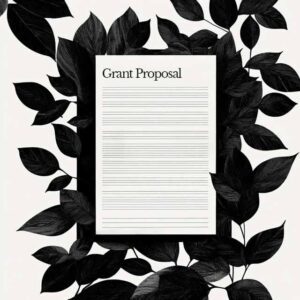Brand voice is a crucial element of your company’s identity. It’s how you communicate your values and personality, setting you apart from competitors and resonating with your audience. A Brand Style Guide, sometimes referred to as a Brand Voice Guide, is a document that encapsulates this voice, providing clear instructions to help anyone writing on behalf of the brand to accurately mimic its tone and style.
This article will take you through the process of creating an effective brand style guide, explaining the necessary elements and providing examples of specific style guide direction.
Understanding Brand Voice
Before delving into the guide creation, it’s vital to understand what brand voice is. The brand voice is the consistent persona or character your brand uses when communicating with its audience. It can be professional, friendly, playful, authoritative, or any other tone that aligns with your brand’s identity and values.
Elements of a Brand Voice & Style Guide
A comprehensive brand voice style guide should include the following elements:
1. Brand Persona
Start by defining your brand persona. This persona should be based on your brand values, mission, and the image you want to project. It’s often useful to think of your brand as a person—what are their characteristics? Are they formal and serious, or casual and jovial? This will form the foundation of your brand voice.
Example: “Our brand persona is a knowledgeable friend who’s always up-to-date with the latest technology trends.”
2. Tone of Voice
Once you’ve defined your brand persona, determine your tone of voice. This refers to the attitude your brand persona adopts when speaking. It could be friendly, professional, informative, or witty, among other things.
Example: “Our tone of voice is friendly and approachable, making complex tech topics accessible to everyone.”
3. Language and Vocabulary
Specify the kind of language and vocabulary your brand will use. Is it laden with industry jargon or does it simplify technical terms? Is it conversational or formal? This can also include guidelines about the use of acronyms, abbreviations, and contractions.
Example: “We use everyday language and simplify technical terms. We avoid jargon unless it’s widely understood by our audience.”
4. Grammar and Style Rules
Outline any specific grammatical rules or style preferences. This can include punctuation preferences (e.g., Oxford commas), capitalization rules (e.g., for product names), and preferred spellings (e.g., American or British English).
Example: “We use American English spelling. We always capitalize our product names and use the Oxford comma for clarity.”
5. Dos and Don’ts
Create a list of dos and don’ts that encapsulate the previous points. This list provides quick, easy-to-follow guidelines that writers can refer to while drafting content.
Example: “Do use contractions to make the writing feel more conversational. Don’t use technical jargon without explaining it in simpler terms.”
6. Writing Samples
Provide examples of correctly styled writing. This can be examples of past content that effectively embodies your brand voice, or new samples created specifically for the guide.
Example: “For a well-executed representation of our brand voice, refer to our blog post titled ‘Demystifying AI: A Beginner’s Guide.'”
Final Thoughts
A well-constructed brand style guide is a powerful tool for maintaining consistency across all your communications. By clearly defining your brand persona, tone of voice, language and vocabulary preferences, grammar and style rules, and providing clear dos and don’ts along with writing samples, you can ensure that anyone writing on behalf of your brand can effectively mimic your unique brand voice.








